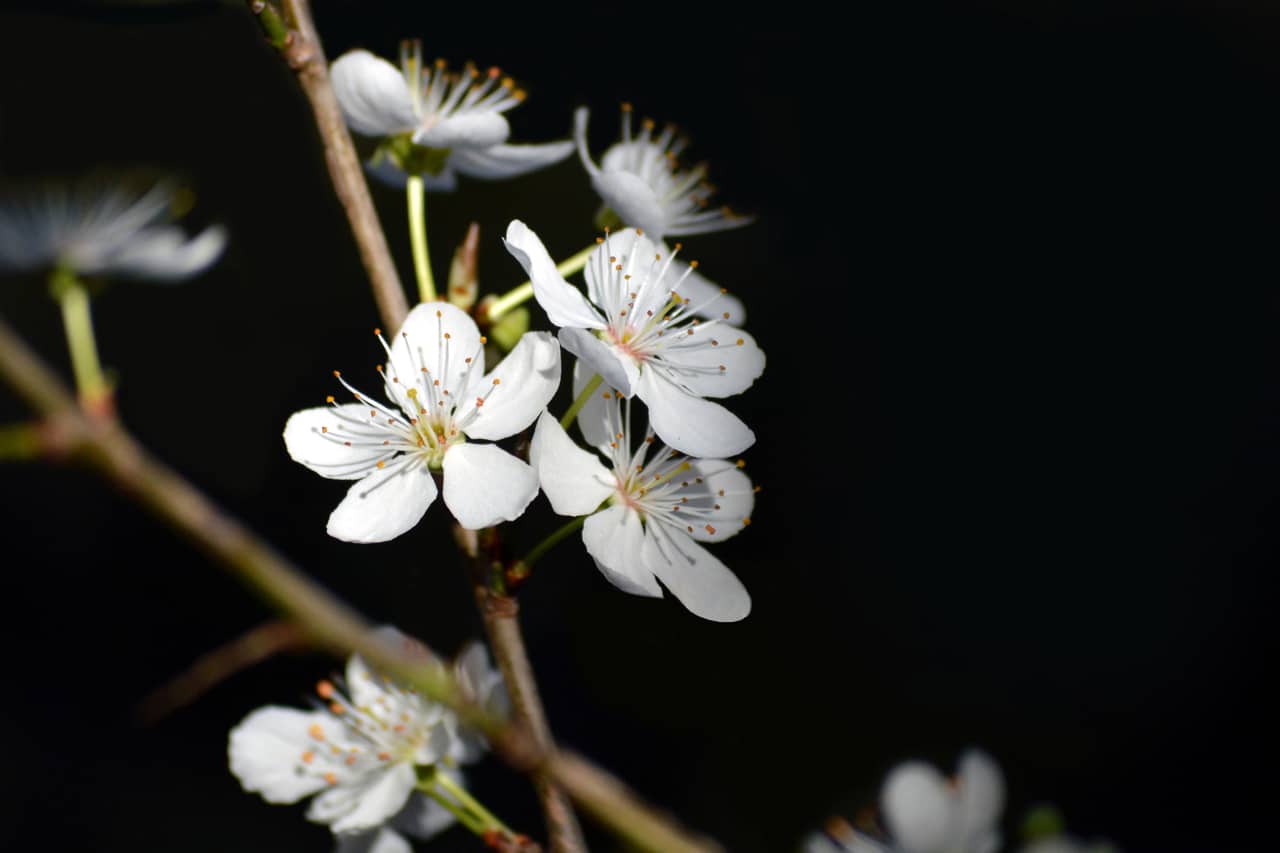
Who said that it was impossible to have a lush garden on land exposed to the sun and where rainfall is scarce? Luckily for many, there is an interesting variety of trees with little water and a lot of sun that will feel very comfortable being part of your future green paradise. It's just a matter of getting informed ...
… Reading this article 😉. Here you will find a selection of species that do not need much maintenance, and which we hope you like.
Almendro
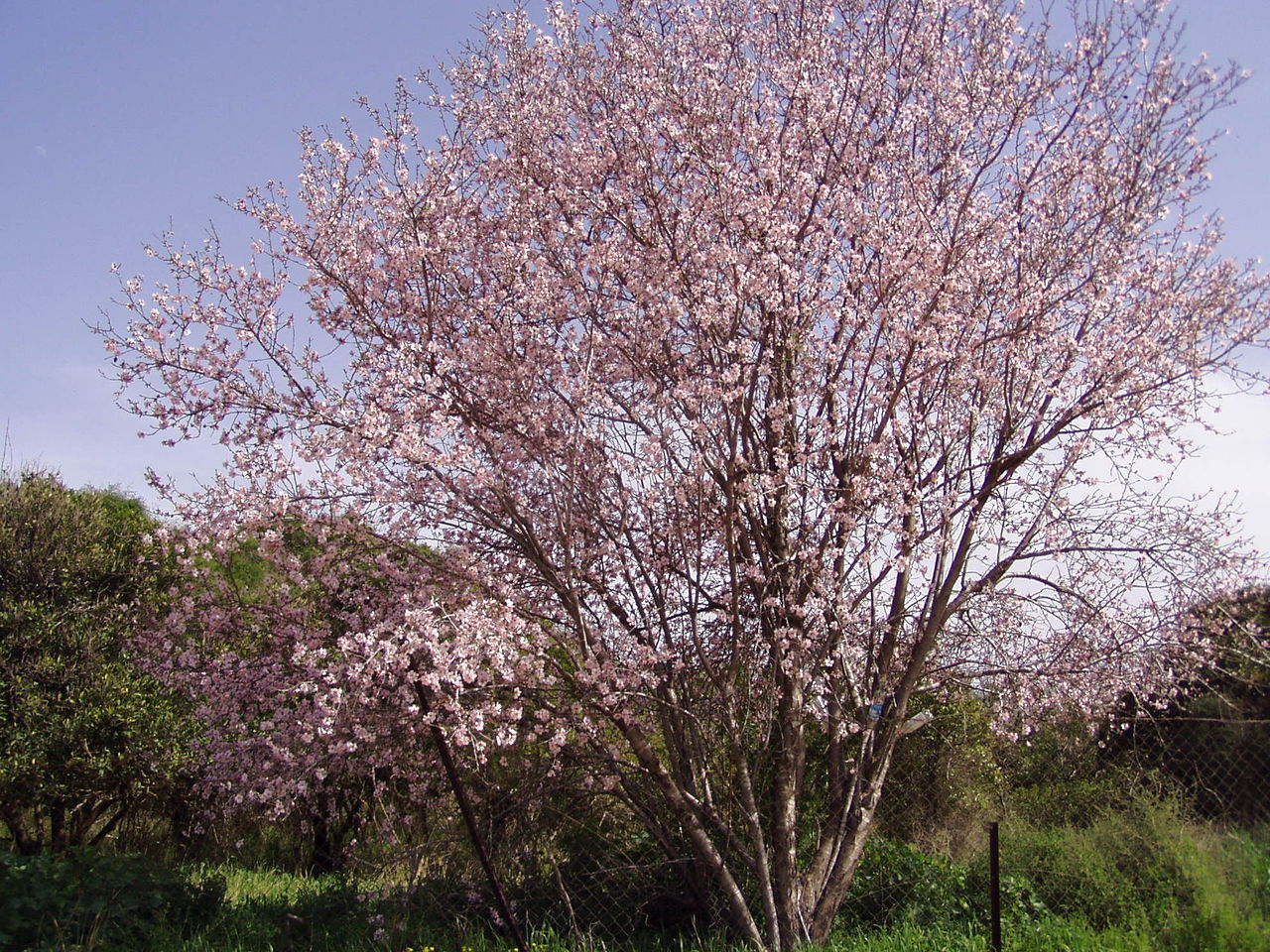
El almond, whose scientific name is Almond, is a deciduous tree native to the mountainous regions of central Asia. It grows to a maximum height of 10 meters, although the usual is that it does not exceed 5m. The trunk has a tendency to lean slightly, and its crown is more or less rounded, composed of lanceolate leaves up to 12cm long.
Its flowers appear in spring, and even sometimes, if the weather is mild, in late winter. These are white, and sprout before the leaves. During the summer the fruits, which are the popular almonds, finish ripening.
It resists frosts down to -7ºC, and does not grow much, so it is excellent for gardens and small orchards. Its fruit is consumed raw and is also used in cakes, ice creams, yogurts, etc.
Judas tree
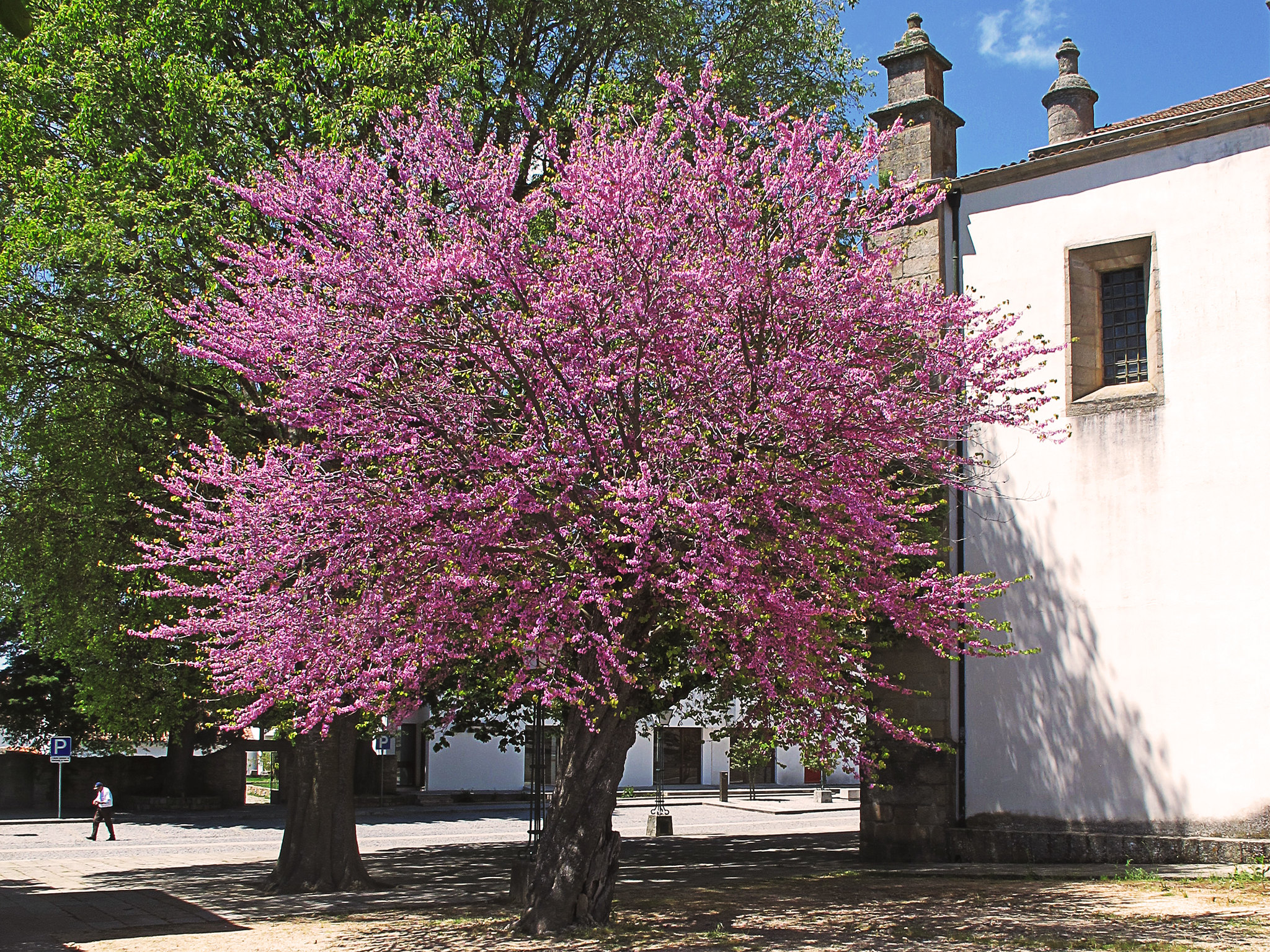
Image - Flickr / jacinta lluch valero
Also known as redbud, love tree, or mad carob, is a deciduous tree whose scientific name is Cercis siliquastrum. It grows to a height of between 4 and 6 meters., but it can reach 15m. Its crown is somewhat open, composed of rounded green leaves.
In spring it fills with pink flowers, and towards summer the fruits finish maturing, which are legumes about 6-10cm long which contain various ovoid-oblong seeds.
Resists frosts down to -10ºC, and it is a highly recommended species to beautify gardens.
Hackberry
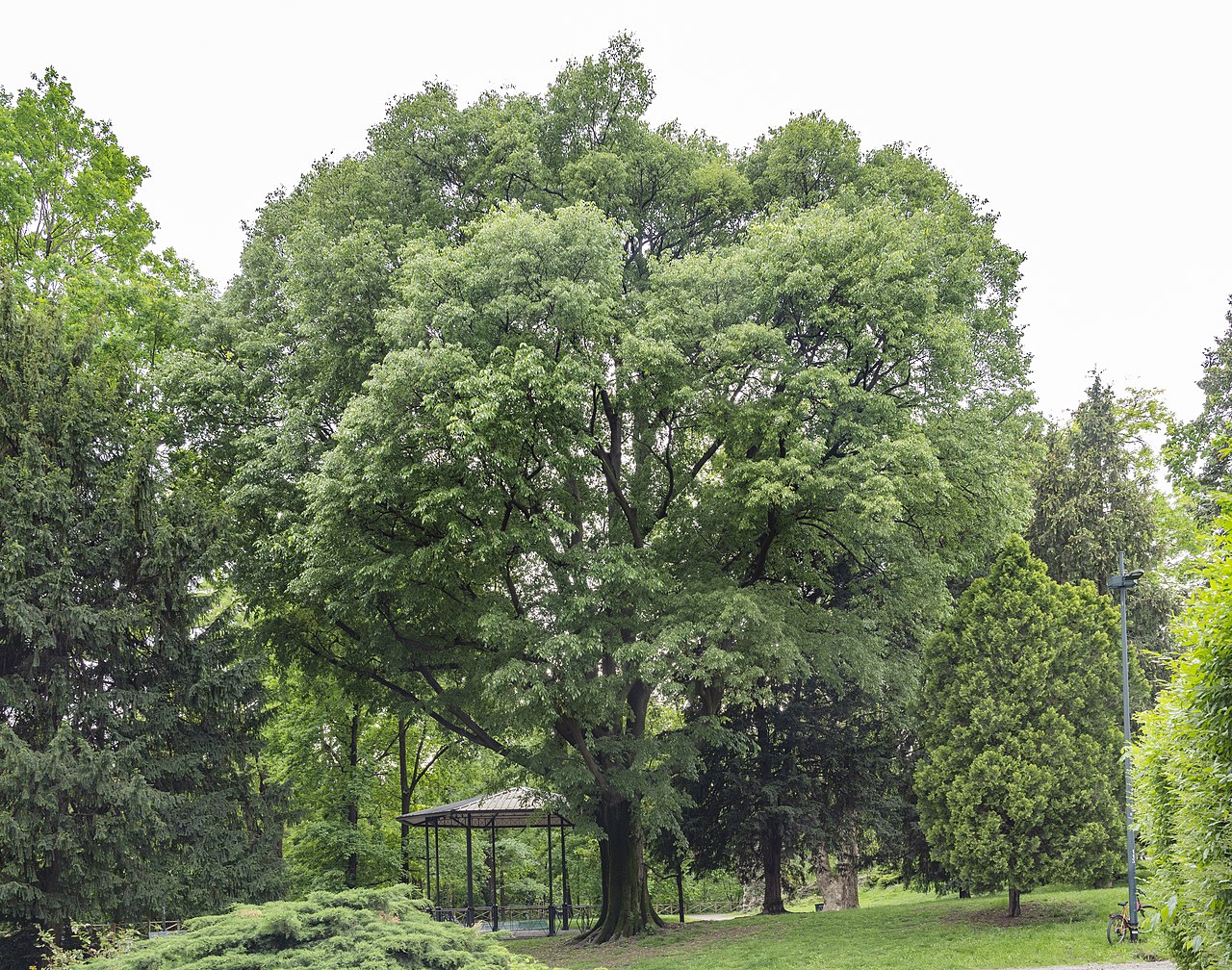
Image - Wikimedia / Sordelli
El hackberry, also known as lodón, ledonero, latonero, lodoño or aligonero, whose scientific name is celtis australis, is a deciduous tree native to the Mediterranean basin and central Europe. It reaches a height of between 20 and 25 meters, with a straight trunk and a crown composed of greenish leaves 5 to 15 cm long.
It blooms in spring, producing greenish-yellow petalless flowers. The fruit is a fleshy, blackish drupe that ripens in late summer.
Resists frosts down to -18ºC, and is excellent as an isolated specimen or in rows forming tall hedges.
Cinnamon
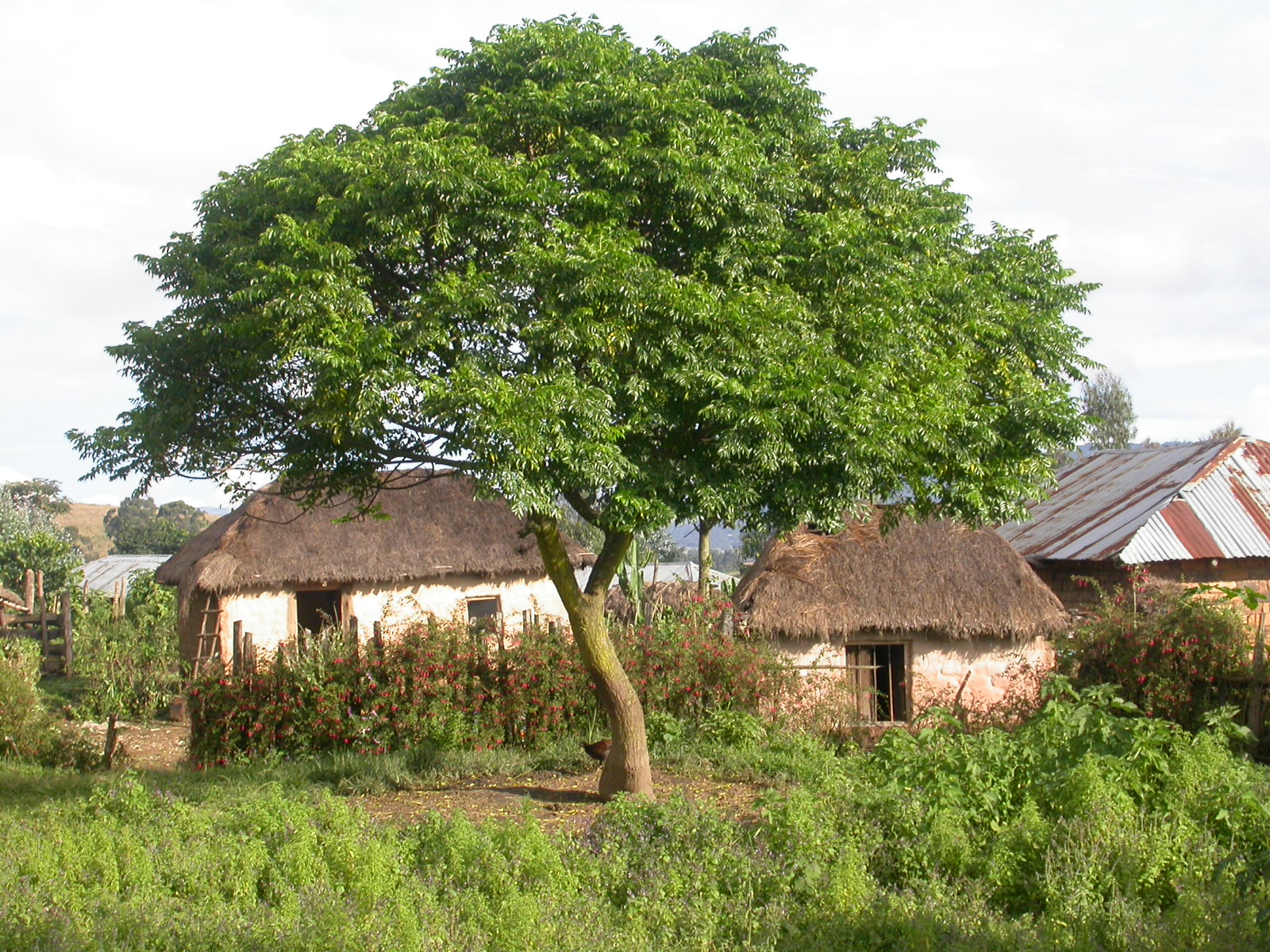
Image - Flickr / Scamperdale
El cinnamon, also known as parasol paradise, sour, piocha, cinnamon, lilac, parasol or melia, and whose scientific name is Melia sourach, is a deciduous tree native to Southeast Asia. Reaches a height of 8 to 15 meters, with a straight and short trunk and a wide crown of 4 to 8 meters in diameter. The leaves are odd-pinnate, 15 to 45cm long, and green in color changing to yellow in autumn before falling.
It blooms in spring, producing small purple or lilac flowers, and later numerous globose 1 centimeter drupes which contain a single seed.
Resists up to -18ºC. It is a perfect tree to have as an isolated specimen, yes, far from pipes and paved floors.
Purple leaf plum
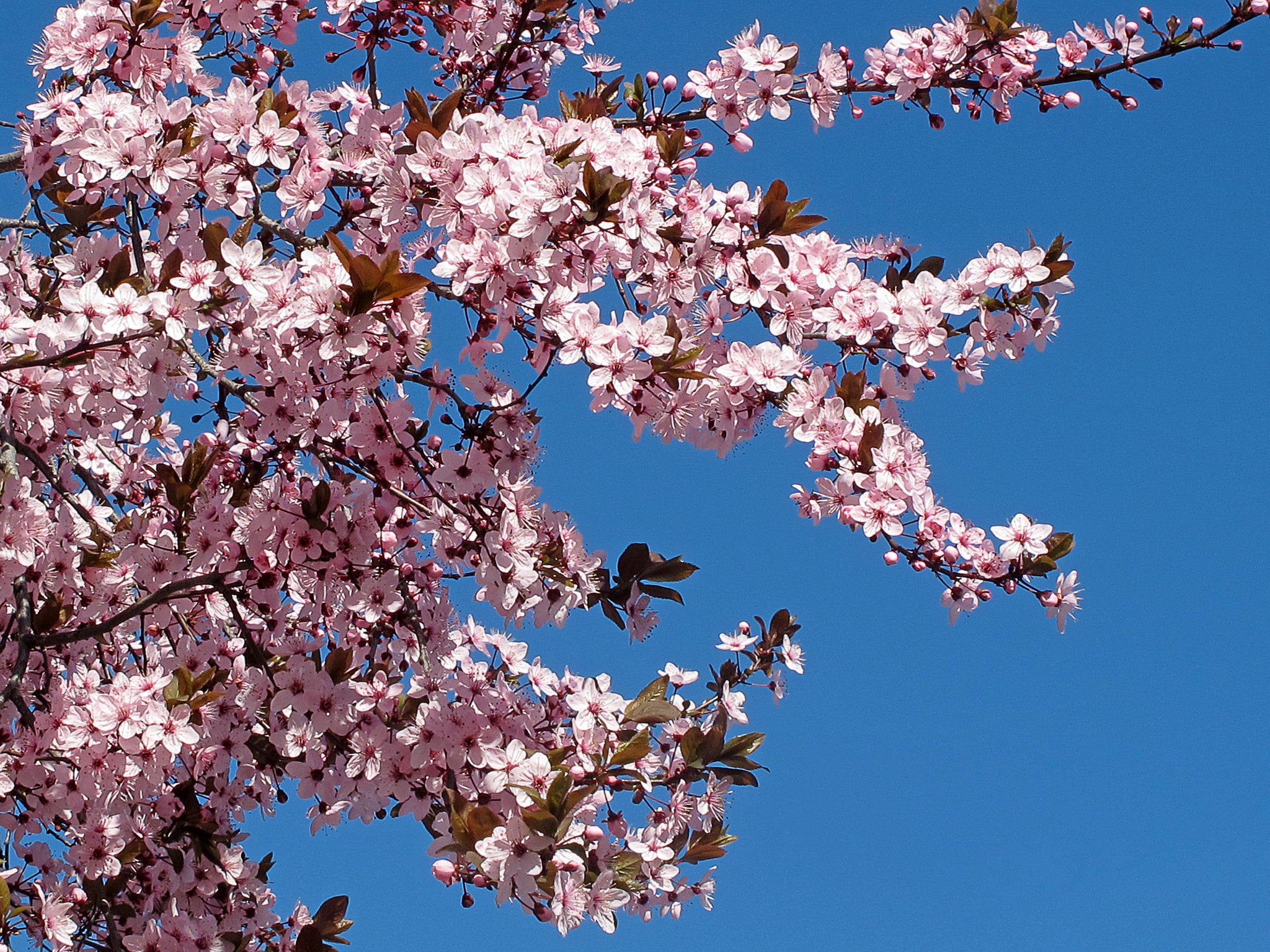
Image - Flickr / jacinta lluch valero
El purple leaf plum, whose scientific name is Prunus cerasifera var. pissardii, is a deciduous tree native to central and eastern Europe, as well as southwestern and central Asia. It reaches a height of between 6 and 15 meters, with a straight trunk and a more or less pyramidal crown composed of purple leaves 4-6cm in length.
It blooms in spring, producing white flowers 1,5-2cm wide. The fruit is a drupe 2-3cm in diameter, yellow or red in color, and edible.
Resists frosts down to -18ºC. Despite its adult size, it is a tree that does not really take up much space and does not have invasive roots, so it is perfect for all types of gardens, be they small, medium or large.
Olive
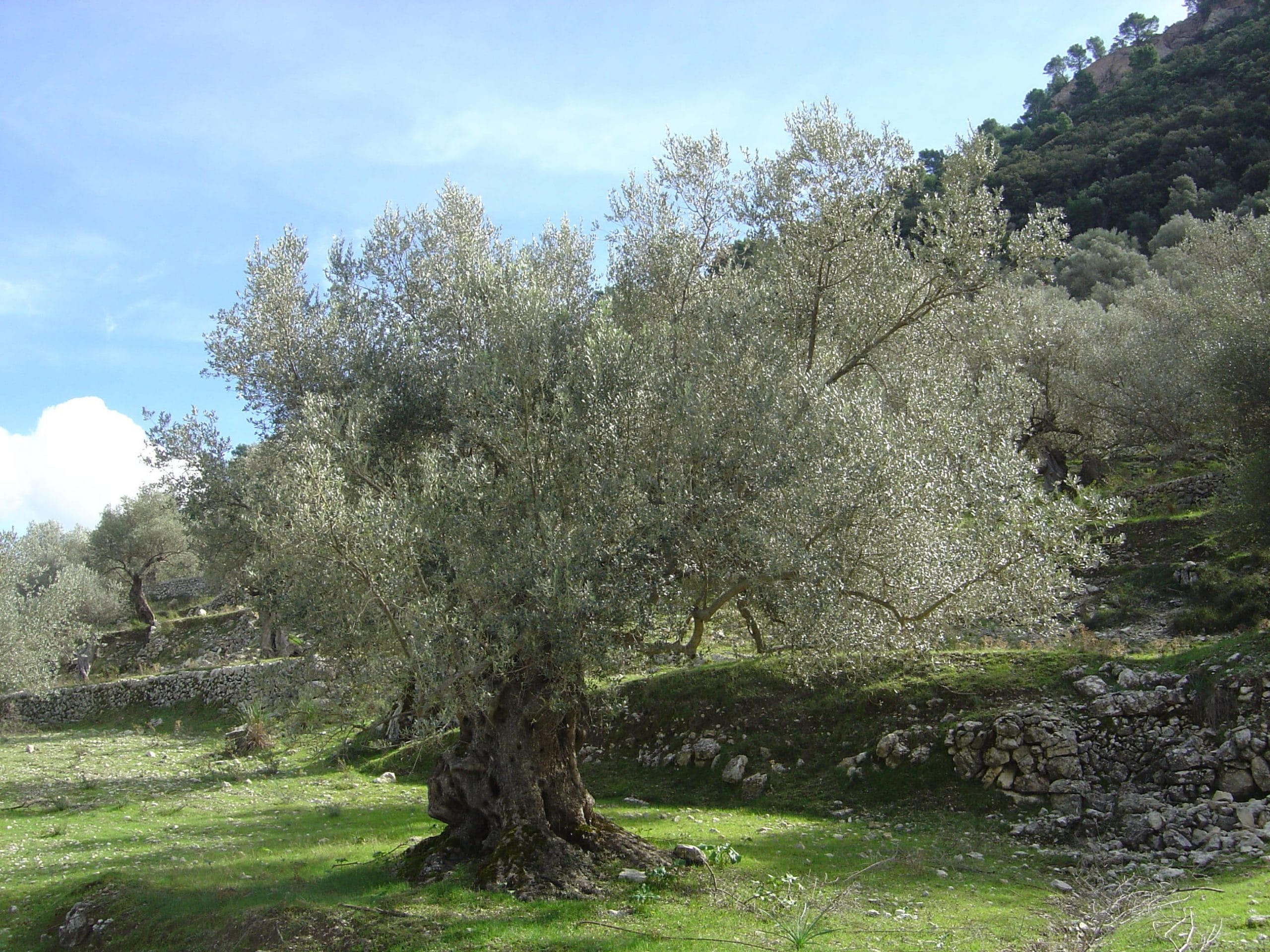
Image - Wikimedia / David Brühlmeier
El olive, also known as olivera, or aceituno, is an evergreen tree native to the Mediterranean whose scientific name is Olea europaea. Reaches a height of up to 15 meters, but having a slow growth rate it is rare to see it exceed 6-7 meters. Its trunk is thick and twisted, with a dense and irregular crown composed of greenish leaves 2 to 8 cm long.
It blooms in spring, producing white panicle flowers. In spring and summer it produces its fruits, olives, which are oily drupes 1 to 3,5 cm long.
Resists frosts down to -7ºC, and can be used as isolated specimen or alignments. Also, you should know that its fruits are delicious both raw and in various recipes, such as pizzas and the like.
Laurel

The laurel, whose scientific name is Laurus nobilis, is an evergreen tree native to the Mediterranean. Grows to a height of 5 to 10 meters, with a straight trunk and a dense crown composed of dark green leaves of about 3 to 9 cm in length.
During the spring it produces yellowish florets, and towards the autumn the berries ripen, which are ovoid, about 15mm and dark blue almost black in color.
It resists well frosts down to -12ºC. Also you can use the leaves -previously boiled- in soup dishes, stews, stews, seafood and fish.
What do you think of these trees with little water and a lot of sun? Do you know others?
Very interesting information about trees that do not require a lot of water, .. thank you.
Thanks to you, Socorro, for leaving us your opinion 🙂